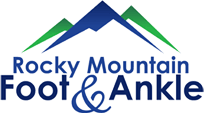Start Slow and Steady
If you find that you quickly develop a bad case of heel pain each time you attempt to start (or restart) a new period of activity, it could simply be that you’re attempting to go too hard, too fast.
It takes time for your body to build up the durability and stamina necessary to handle longer, more vigorous workouts. Essentially, what happens is that the soft tissues surrounding your heel break down with exercise but aren’t able to rebuild themselves in time for the next exercise session. Instead of leading to physical improvement, this only leads to chronic pain.
Take care not to overexert yourself, especially when starting a new exercise plan. Go slower at first than you think you need to, and listen to your body. Increase activity levels only gradually—about 10 to 15 percent per week at most. It may take longer to reach your goal than you initially hoped, but you’ll greatly increase your chances of getting there without getting stymied by heel pain.
Mix Up Your Activities
Cross-training in a variety of different kinds of exercises that work different parts of the body is a great idea. Not only does it help you build overall fitness and coordination, but it can help you prevent and manage heel pain, too!
If heel pain is an issue, it may be because you’re doing too many high-impact activities that are tough on feet without giving yourself adequate rest time. This is very true of many of our patients who are runners.
Make sure you put plenty of rest days into your exercise calendar since your body needs that time to rebuild itself stronger. And instead of always choosing high-impact sports like running or basketball, take some days to work on low-impact exercises like bicycling, swimming, or weight training. When you cross-train in this way, you can give your heels a break without losing momentum as you continue to work toward your fitness goals.
Warm-Up and Cool Down
Always make sure you start your exercise session with some warm-up activities and dynamic stretches, like lunges, knee raises, or light jogging.
In regard to heel pain specifically, make sure your feet, ankles, and calves get some attention during your warmup time. Cold, tight calf muscles are a significant contributor to heel pain, since the calves are linked with the heel via the Achilles tendon. Warming them up properly reduces the risk of injury and aggravation to the heels.
After exercise, perform some static stretches, again focusing on the feet and calves. (These are the conventional “hold in one place” stretches.) It’s best to do these at the end of the workout, when your muscles are already warm and somewhat relaxed. Post-workout stretches help you reduce post-workout tension, stress, and pain in the heels—and also help build the kind of flexibility and strength you need to prevent future injuries.
Listen to Your Body (and Call Us if You Need Help)
“No pain, no gain” might work as an inspirational motto for some, but taken at face value it’s not particularly good advice. While it’s true you do have to push yourself in order to improve, pain is not something you should ever be dealing with in your heels. It’s a sign that something is wrong, and something needs to change.
Listen to what your body is telling you when you exercise. If your heels are hurting, then stop. Dial it back. Try the strategies we’ve discussed in this blog and see if they help.
If they do, and your heel pain goes away, great!
If they don’t, or they only help a little bit or for a short time, then please give us a call. Chronic heel pain during or after exercise is not something that you should have to tolerate. If home care isn’t working, we can absolutely help you.
We are experts in heel pain diagnosis and treatment. Once we have a good understanding of what’s causing your discomfort, we can recommend a comprehensive treatment plan tailored to your specific needs.
About 95 percent of heel pain cases can be treated within 2-3 months of the initial appointment using nonsurgical methods only, such as physical therapy, custom orthotics, and regenerative medicine.
Are You Suffering From A Sports Injury In The Caldwell Or Meridian, Idaho Area?
If you're suffering with a sports injury you owe it to yourself to speak with our experienced podiatrists as soon as possible. Please feel free to contact us online or call our office directly at 208.855.5955 to schedule your appointment. We service all areas surrounding Meridian, Idaho as well as all areas in the Caldwell, Idaho area. We look forward to helping you!

